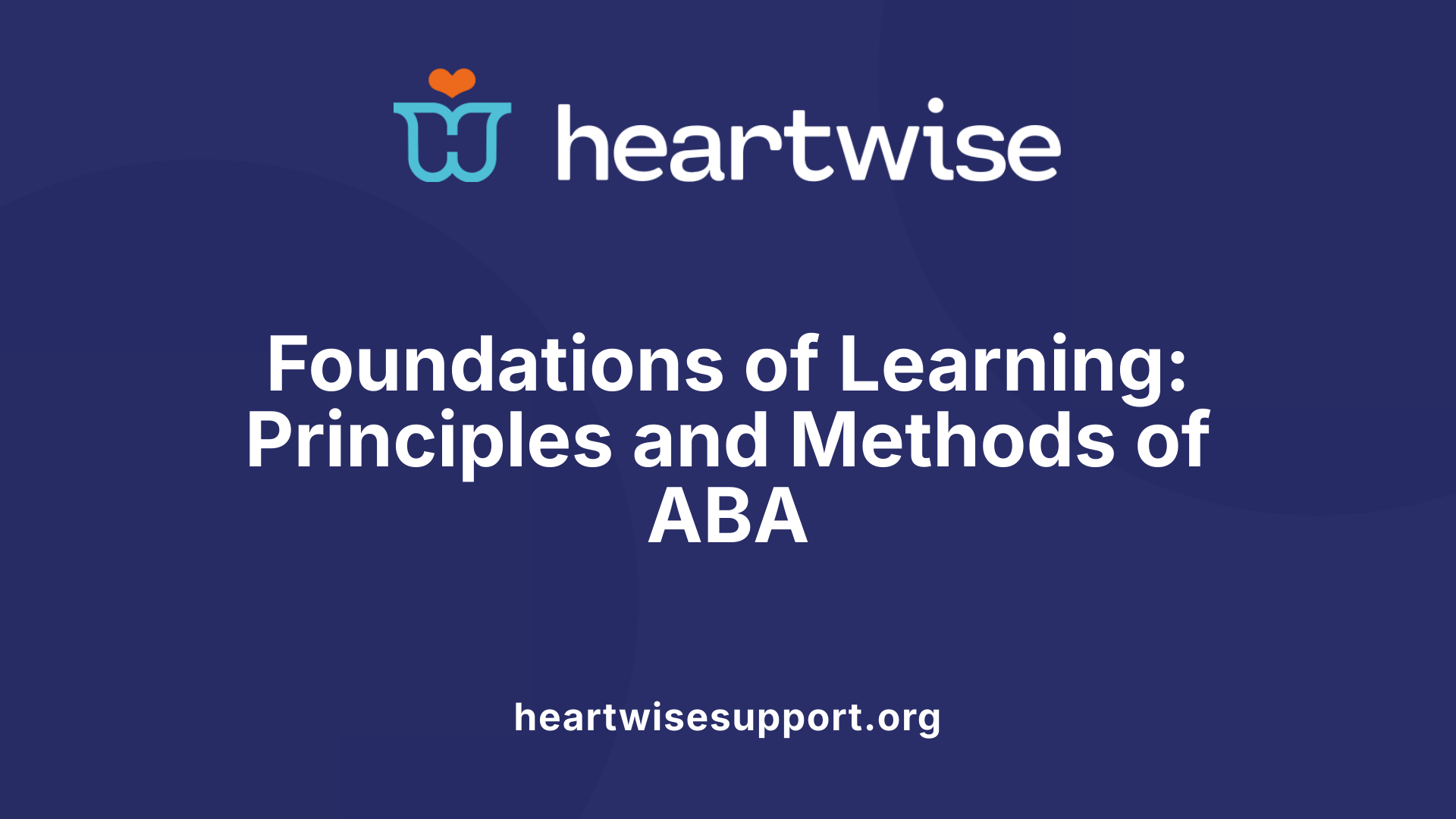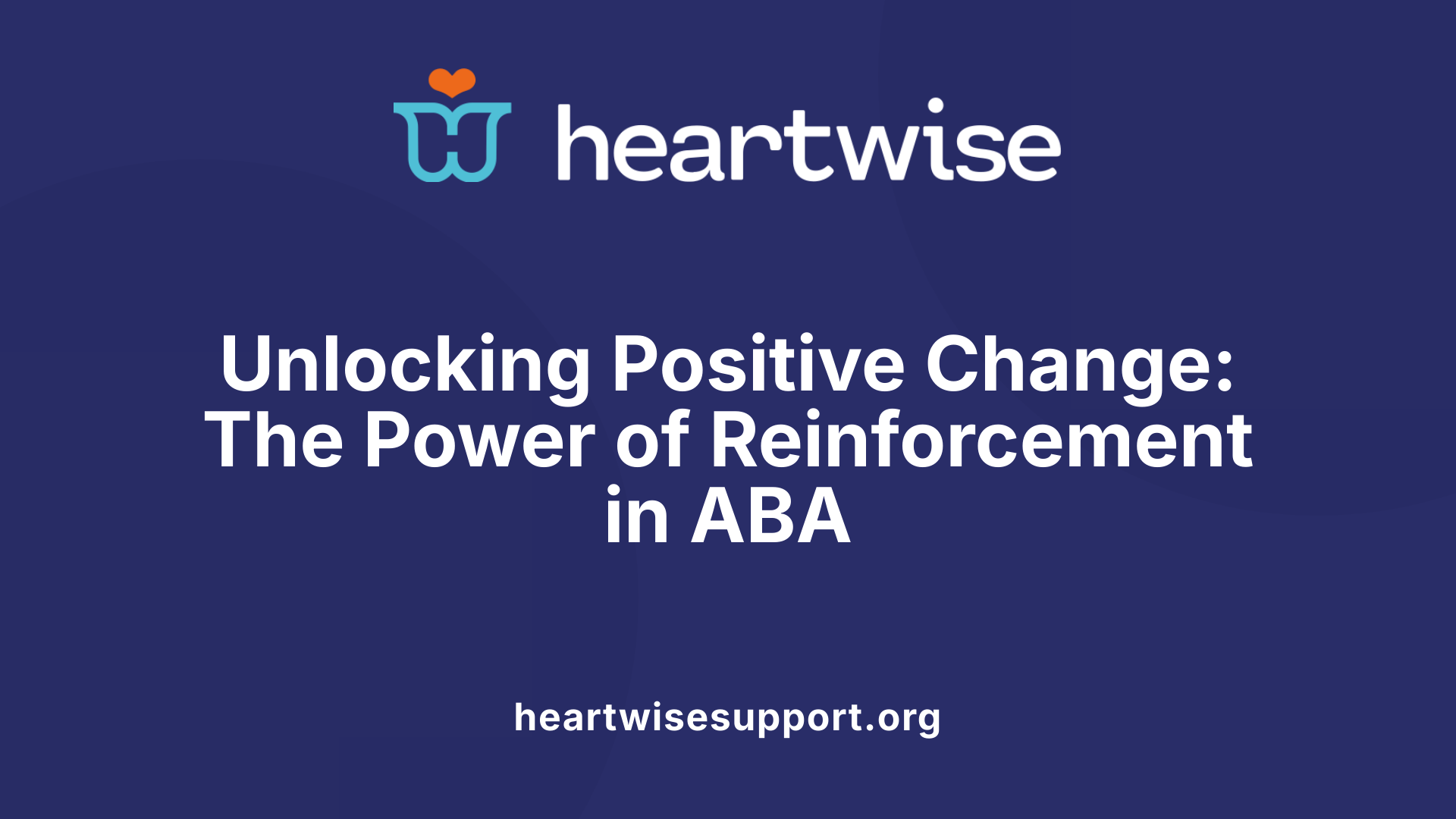Harnessing ABA for Skill Development and Positive Behavior
Applied Behavior Analysis (ABA) is a scientifically grounded approach that has revolutionized how educators and therapists support individuals, especially children with autism, in acquiring new skills and reinforcing positive behaviors. Rooted in the science of learning and behavior, ABA offers a systematic framework that emphasizes individualized interventions, evidence-based techniques, and continual assessment to promote meaningful, lasting change across various settings.
Principles and Methods of ABA for Teaching New Skills

What are the principles and methods of ABA for teaching new skills?
Applied Behavior Analysis (ABA) is a well-established, science-based approach that helps teach new skills and modify behaviors by understanding how behavior works. Its foundation rests on several core principles that guide effective teaching techniques.
One of the most fundamental concepts in ABA is positive reinforcement. This technique involves providing a reward or positive consequence immediately after a desirable behavior occurs, which increases the likelihood that the behavior will happen again. Reinforcement can be tangible, like a toy or treat, or social, such as praise or a high-five.
Another critical principle is task analysis. This involves breaking down complex skills into smaller, manageable steps to facilitate learning. For example, teaching a child to brush their teeth might involve steps like picking up the toothbrush, applying toothpaste, brushing, and rinsing. Each step is taught sequentially, ensuring mastery before moving on.
Fading is a systematic process used within ABA to gradually reduce prompts or prompts’ intensity, encouraging independence. For example, a therapist might initially hand a child a toy to motivate play and then gradually decrease assistance as the child learns to play independently.
ABA employs various methods to teach and reinforce new behaviors:
- Prompting: Using cues or assistance to encourage the correct response, which are gradually removed as the learner gains independence.
- Shaping: Reinforcing successive approximations toward a target behavior, helping the learner gradually refine their skills. For example, praising a child for making sounds that gradually resemble words.
- Modeling: Demonstrating desired behaviors so the learner can imitate and learn through observation.
- Chaining: Connecting individual steps learned through task analysis into a complete sequence, such as steps involved in self-care routines.
- Reinforcement Systems: Implementing structured reward systems, like token economies, to motivate and encourage consistent effort.
These methods are guided by detailed data collection and ongoing analysis to adapt interventions to each learner’s progress and needs. Qualified professionals, like Board Certified Behavior Analysts (BCBAs), develop individualized plans, ensuring that the strategies focus on socially meaningful goals like communication, social skills, and independence.
In diverse settings such as home, school, and community, ABA techniques are applied to foster consistent, real-world improvements in behavior. By focusing on systematic instruction and evidence-based practices, ABA provides a comprehensive framework for teaching new skills effectively in children, especially those with autism spectrum disorder.
How ABA Supports Skill Development in Children with Autism

How does ABA support skill development in children with autism?
Applied Behavior Analysis (ABA) enhances learning and skill building for children with autism through proven strategies grounded in scientific research. Its approach involves detailed assessments to understand each child's unique needs, allowing practitioners to craft customized plans aimed at fostering growth.
One of the central pillars of ABA is positive reinforcement. This technique involves immediately rewarding a behavior to encourage its recurrence, which helps children acquire new skills and improve existing behaviors. Whether it’s learning how to communicate, develop social skills, or perform daily living activities, reinforcement is tailored to what motivates each child, such as praise, tokens, or access to preferred activities.
ABA techniques include breaking complex behaviors into smaller, manageable steps, a method known as task analysis. This makes learning new skills like dressing, grooming, or academic tasks more achievable.
In addition to structured teaching, ABA employs naturalistic teaching and role-playing methods to teach skills in real-life contexts. Natural environment teaching leverages everyday routines and interests, helping children practice skills during play or daily activities.
Role-playing activities simulate social situations, enabling children to practice interactions and communication in a safe, supportive setting.
A vital goal of ABA is to facilitate the generalization of skills across different environments—home, school, or community. Consistent reinforcement across these settings ensures that skills are maintained and used independently.
Parents and caregivers are often involved to reinforce learned behaviors regularly, creating a seamless learning experience. By focusing on functional, socially significant skills, ABA aims to improve overall independence and quality of life for children with autism, equipping them with tools for successful adaptive functioning.
ABA's comprehensive and adaptable methods make it an effective pathway for children to develop critical skills that support their growth and integration into various aspects of daily life.
Reinforcement in ABA: The Key to Positive Behavior Change

What is reinforcement and why is it important in ABA?
Reinforcement plays a central role in Applied Behavior Analysis (ABA) by strengthening desirable behaviors. It involves providing a consequence immediately after a behavior to increase the chances that the behavior will happen again. This principle is fundamental because it encourages learning and helps individuals develop new skills or improve existing ones.
In ABA therapy, reinforcement can be positive or negative. Positive reinforcement adds a pleasant stimulus, like praise or a toy, to promote a behavior. Negative reinforcement removes an unpleasant experience, like stopping loud noise when a person follows instructions. Both methods aim to increase the likelihood of a behavior occurring again.
How does reinforcement work in ABA therapy to promote positive behaviors?
Reinforcement works by creating a clear connection between a behavior and its consequences. When a desired behavior happens, therapists immediately provide a reinforcer that the individual finds motivating. For example, a child might receive praise or access to a favorite activity after correctly responding to a question.
This prompt feedback helps the person understand which behaviors are preferred and encourages them to repeat those behaviors. Over time, the repeated reinforcement leads to the establishment of useful skills, like communication, social interaction, or self-care.
Why is immediate and contingent reinforcement important?
Timing is crucial in ABA reinforcement strategies. Immediate reinforcement ensures the individual associates the reward directly with the behavior, making the learning process clearer.
Contingent reinforcement means the reward is only given if the specific behavior occurs. This helps differentiate acceptable responses from problematic behaviors. For example, only praising a child when they ask politely, not when they act out.
Consistent and timely reinforcement helps embed new behaviors and fosters independence. It also reduces confusion about what exactly is being rewarded.
How are reinforcers personalized?
Effective reinforcement depends on knowing what motivates each individual. Therapists conduct assessments to determine preferred items or activities—these could be toys, praise, edible treats, or access to special activities.
Incorporating personal preferences ensures that reinforcement is meaningful, which enhances motivation and learning. As skills improve, reinforcers can be gradually faded to encourage independence.
Proper selection and timely use of reinforcement are vital for successful ABA therapy. They help teach new skills, promote consistent behavior, and create lasting change.
| Aspect | Description | Examples |
|---|---|---|
| Type of reinforcement | Positive or negative | Praise or removing an uncomfortable stimulus |
| Timing | Immediate | Giving a reward right after the behavior |
| Personalization | Based on individual preference | Favorite toy, praise, edible treats |
| Application setting | Varied environments | Home, school, community |
| Goal | Increase desirable behaviors | Sharing, following instructions, social interactions |
Benefits of Reinforcing Positive Behaviors Using ABA
What are the benefits of using ABA to reinforce positive behaviors?
Applying reinforcement techniques in ABA therapy offers numerous advantages for individuals with autism spectrum disorder. It effectively boosts desirable actions such as communication, social skills, and daily living abilities.
Consistently providing positive rewards—like praise, tokens, or preferred items—after targeted behaviors motivates individuals to repeat these actions. This not only promotes skill acquisition but also helps in maintaining behaviors over time.
Since ABA strategies are backed by scientific research, they are tailored specifically to each person's needs. This personalization ensures that reinforcement supports meaningful progress, whether in improving language, social interaction, or self-care skills.
Moreover, reinforcement strategies help diminish maladaptive behaviors like tantrums or aggression by teaching alternative, appropriate behaviors with clearly identified functions.
Overall, nurturing positive behaviors through ABA fosters greater independence, enhances social relationships, and improves overall quality of life. These benefits highlight the importance of reinforcement as a cornerstone in effective behavioral intervention for children and individuals with autism.
Effective Strategies for Reinforcing Positive Behaviors
Reinforcing positive behaviors is a cornerstone of Applied Behavior Analysis (ABA) and involves multiple techniques tailored to individual needs. Using tangible rewards, praise, and social reinforcers are common methods that motivate learners and help establish desirable behaviors. For example, providing a child with a favorite toy or extra playtime immediately after completing a task can significantly boost motivation.
Scheduling reinforcement properly is essential. Fixed ratio or fixed interval schedules offer consistent rewards after a set number of responses or a specific time interval, which helps maintain motivation for ongoing tasks. Conversely, variable ratio or interval schedules, where reinforcements are unpredictable, often produce more resistant and steady behaviors because of the element of surprise.
In addition to structured reinforcement, natural environment teaching (NET) and incidental learning play a vital role. These strategies involve embedding learning opportunities within everyday routines, such as during play or mealtime, making learning more relatable and functional. This approach also encourages generalization of skills across different settings.
Teaching replacement behaviors and fading prompts ensure the individual learns appropriate ways to express needs or solve problems, reducing reliance on maladaptive behaviors. For instance, teaching a child to ask for a break instead of acting out involves modeling, prompting, and gradually reducing assistance as the child demonstrates understanding.
Overall, combining immediate, personalized reinforcement with natural learning opportunities and systematic fading creates a sustainable, motivating, and effective framework for positive behavior development in ABA.
Optimizing Reinforcement Schedules for Skill Acquisition
What is the most effective reinforcement schedule for teaching new skills in ABA?
In Applied Behavior Analysis, selecting the right reinforcement schedule is crucial for effective learning. For teaching new skills, a continuous reinforcement schedule is often the most effective starting point. This means that every correct response is immediately reinforced, which creates a strong and clear link between the behavior and its positive consequence.
Using continuous reinforcement helps learners quickly understand what is expected and encourages rapid acquisition of new behaviors. It provides immediate feedback, which is essential when establishing foundational skills. As the individual begins to master a skill, therapists typically transition to intermittent reinforcement schedules. These are less frequent and include fixed ratio or variable ratio schedules, where reinforcement is given after a certain number of responses or at unpredictable intervals.
Intermittent reinforcement helps maintain the behavior over time, making it more resistant to extinction. It also mimics natural environments where rewards are not always given, promoting more durable and generalized skill use. Adjusting these schedules based on individual progress ensures that reinforcement remains motivating without becoming overly dependent on external rewards.
Tailoring reinforcement schedules to each individual’s needs and gradually modifying them fosters steady skill development and helps sustain behaviors outside of therapy sessions. The combination of initial continuous reinforcement and later thinning to variable or fixed ratios supports effective learning that lasts.
Showcasing Positive Behaviors and Ethical Considerations

What is an example of positive behavior in ABA and how is it reinforced?
A common positive behavior in ABA is a child sharing toys with peers. This behavior is encouraged and reinforced using social praise, such as saying "Great sharing!" or giving a hug, which provides immediate positive feedback.
In addition, tangible rewards like stickers, tokens, or small treats can reinforce sharing. When the child shares voluntarily, the therapist or parent responds immediately with praise or a preferred item. This timely reinforcement helps the child see the connection between the behavior and the positive outcome.
The principle behind this is positive reinforcement: adding a desirable stimulus after the behavior to increase its future occurrence. Over time, as sharing becomes more frequent, the reinforcement can be gradually faded, promoting independent social skills.
It is essential that reinforcers are personalized according to the child's preferences. Consistency and immediacy in delivering rewards ensure the behavior is strengthened effectively.
Using systematic positive reinforcement not only fosters social interaction but also builds emotional regulation, confidence, and autonomy in children, supporting their overall development.
The Power of Evidence-Based Intervention
ABA’s systematic, individualized, and evidence-based strategies provide a powerful means to teach new skills and reinforce positive behaviors. When applied ethically and tailored to each learner’s preferences and needs, ABA fosters meaningful development, independence, and improved quality of life. By understanding and utilizing reinforcement effectively, educators, therapists, and caregivers can support lasting behavioral change and help individuals reach their full potential.
References
- Applied Behavior Analysis (ABA) | Autism Speaks
- Reinforcement in ABA: Key Principles and How They Work
- How to Use ABA in the Classroom
- ABA Tips for Reinforcing Positive Behavior - New Story Schools
- Easy ABA Techniques to Use with Your Child
- 10 Common ABA Therapy Techniques
- Positive Reinforcement in ABA Therapy for Autism
- 5 Benefits of ABA Therapy for Autistic Child
- Applied Behavior Analysis (ABA) | Autism Speaks











